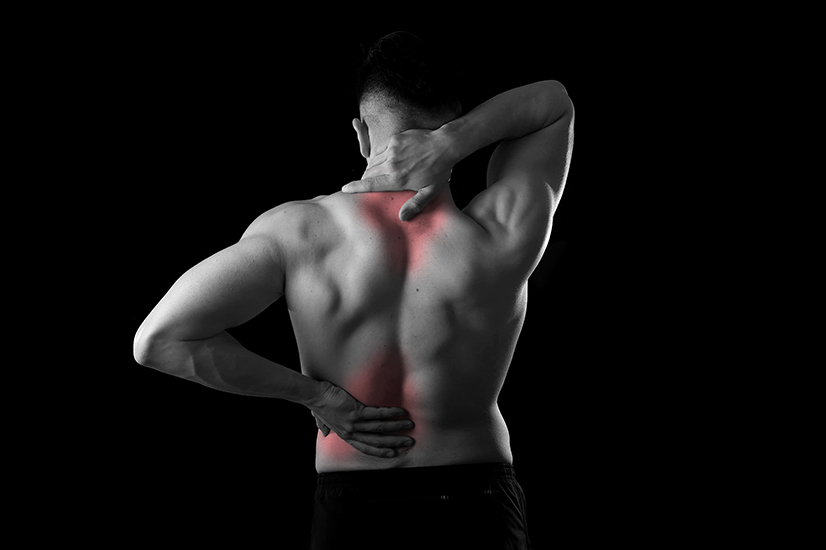The application of acupuncture in the treatment of chronic pain

By Matthew Enright AP – Parkland, Florida – Acupuncture, as part of Traditional Chinese Medicine, has been found to have a profound effect on both acute and chronic pain. The insertion of thin, sterile needles works to release natural painkillers in the body while reducing inflammation and spasm. It is also known to facilitate proper blood flow, allowing natural healing to occur. Before we get deeper into this amazing form of holistic medicine let’s learn more about chronic and acute pain.
Chronic pain
Chronic pain is any kind of pain that goes on for 6 months or more without ceasing. Practitioners hold different opinions when it comes to the transitional period where acute pain turns into chronic pain. There are professionals who define chronic pain as pain that lasts longer than three months while others are of the opinion that pain can only be referred to as chronic if it has lasted for more than 12 months.
Despite divided opinions among professionals as to what should be classified as chronic pain, the situation on the ground reveals that many people have to deal with such pain on a daily basis. Epidemiological studies about chronic pain show that 10% to 56% of people across the globe are affected by chronic pain. In America, the number of people recorded to be suffering from chronic pain stands at 100 million. Such patients do not get complete relief from the pain even when it does go away as signs of discomfort can be felt for years after. In most cases, it is both physically and emotionally destabilizing.
Chronic pain can manifest as an individual disease or as a result of another disease or disease process. Treatment for the condition usually entails medicine meant to alleviate symptoms and better the patient’s condition of life.
Acute pain
Acute pain is differentiated from chronic pain by the span of time it remains in the body. Acute pain is felt whenever the body is injured in any way such as from burns, cuts and more. It normally takes about a month to clear. Researchers also refer to another type of pain known as sub-acute pain which lasts for about three to six months. If this pain does not respond to treatment, then it is labeled as chronic pain.
What are the causes of acute and chronic pain?
Pain is the result of any number of factors, ranging from physical injury to illness. Lifestyle choices and daily activities may also be the reason behind chronic pain (for instance, sitting for long periods of time). Physiological pain is caused by factors such as anxiety, depression or stress. One could also undergo pain caused by external factors.
Symptoms of chronic pain
The main sign of chronic pain is a sharp or mild feeling of discomfort that persists even after several attempts to treat it. In some patients, the pain manifests as a burning sensation, soreness or aching in one part of the body or the other. In others, the pain may be accompanied by tightness, stiffness and a general feeling of discomfort.
Chronic pain also comes with other complications such as fatigue and a weakened immune system. It may also be accompanied by mood swings which affect the person’s daily routine. Affected patients don’t have the impetus to do anything and would rather lie down. People suffering from physiological pain also experience anxiety, hopelessness, irritability and fear, among other emotions that unsettle the psyche. In other cases, chronic pain can leave the patient debilitated.
Symptoms of acute pain
People suffering from acute pain experience symptoms similar to those of people suffering from chronic pain. In this case, however, the symptoms do not last as long. They then leave the body once the problem is treated.
Types of pain
The type of pain experienced depends on the body part affected. Some common pain sensations include
- migraine and headache
- arthritis and joint pain
- neck pain
- back pain
- shoulder pain
- sciatic nerve pain
- foot pain
- elbow pain
- knee pain
- hip pain
- fibromyalgia
The pain may come and go and may be severe or mild. Mild pain is inconveniencing; the patient can go on with their normal day but not in full strength. Chronic pain on the other hand affects the body such that the person is incapacitated.
Western treatments for chronic pain
In some instances, patients can only get relief from such pain through surgery, such as when one suffers from disc problems of the spine. There are a number of methods applied when treating pain which mainly depend on;
- Reason for the pain
- Region of the body where the pain is felt
- Seriousness of the condition
- How long the problem has persisted
Prescription drugs and injections
Prescription drugs such as cortisone come in handy. The drug is injected to the region where the pain is felt, and is mostly used when the patient suffers from disc problems or other kinds of spinal complications.
Topical creams and muscle relaxers are mostly used when it comes to over-the-counter pain relieving medicine. Oxycodone is one of the major prescription drugs administered in such cases. However, these come with certain side effects which patients should know about as they use the drugs, with one of the major problems being dependency.
Radio Frequency Ablation
It is an approach where pain signals in the brain are stifled by killing nerves that communicate the pain. It is a method popularly used by patients of neuropathy and arthritis. One instance of treatment lasts for eight months after which another is required.
Acupuncture for chronic pain
Acupuncture has been known to be an effective treatment for many types of pain since centuries ago when it was discovered in the East. The idea is to stimulate certain points of the body known as meridians which in turn activate energy flow throughout the system, initiating self-healing. The main reason acupuncture has always been seen as one of the main alternative ways of dealing with pain is that the therapy encourages the release of endorphins from the brain, which function as pain killers.
Research showing the efficacy of acupuncture in treatment of chronic pain
- Low back pain; The Agency of Healthcare Research and Quality carried out research in 2010 showing that acupuncture is viable for treating lower back pain.
- Migraines and headaches; acupuncture has been shown to offer relief to patients suffering from headaches by reducing the frequency and severity of headaches.
- Neck pain; Research conducted in Germany involving 14,000 trial subjects showed that acupuncture is effective in treating neck pain. The research showed that patients felt relief after 3 weeks of acupuncture therapy.
We can help you deal with chronic pain
We have been in the business of delivering alternative treatments for many conditions for close to two decades now. We know how stressful pain of any kind can be and have treated numerous patients with various problems . Reach out to us today to see just how well acupuncture works to get you back to your normal self.
References
- Berman BM, Langevin HM, Witt CM, et al. Acupuncture for chronic low back pain. New England Journal of Medicine. 2010;363(5):454–461.
- Linde K, Allais G, Brinkhaus B, et al. Acupuncture for migraine prophylaxis. Cochrane Database of Systematic Reviews. 2009;(1):CD001218. Accessed at www.thecochranelibrary.com on October 26, 2016
- Witt CM, Jena S, Brinkhaus B, et al. Acupuncture for patients with chronic neck pain. Pain. 2006;125(1–2):98–106.
